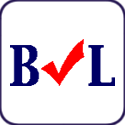Data, Technology, Personalization Top Event Marketing Trends
Because AccuList helps trade show and conference marketing clients with market-tested direct mail, e-mail and telemarketing lists and services, we naturally watch trends in event marketing closely. Overall, the good news is that, even in a digital world, live events and face-to-face experiences retain their power, with over 40% of marketers saying live events are their most important marketing channel. Plus, event marketers have more tools (and challenges) as they move into 2020.
New Technology Tools Build Buzz and Engagement
A post by marketing guru Michael Brenner for Marketing Insider Group cites a number of technology trends that event marketers can use to boost attendance, engagement and ROI. For example, Artificial Intelligence (AI) can improve efficiency at all stages of event planning and marketing, from ticketing and sales to personalized promotions and automated event follow-up, while augmented reality (AR) and virtual reality (VR) can provide more immersive and engaging experiences to event-goers, for example by demonstrating a product (such as a luxury apartment) that is difficult to do at scale or by engaging attendees like the Coca Cola-hosted VR that let participants be a football player in the World Cup. Interactive video is also being increasingly used to build buzz on social media before events and to increase personalized interaction at events.
Up-to-date, Quality Data Literally Drive the Show
Marketing technology now provides access to real-time event data that can enable marketers to evaluate everything from attendance numbers and attendee satisfaction to which talks and topics are the most popular. Long-term, accurate information about registrations, ticket sales, and attendee demographics can help create effective audience-building and exhibitor sales campaigns. Indeed, many marketers find their biggest problem is being overwhelmed by a flood of data, ranging from audience attraction (website visits, social media clicks, registrations); on-site engagement (RFID metrics, mobile app engagement); post-show follow-up (attendee opinions, costs, ROI); and auxiliary data (CRM, membership data, attendee interests). The key to prioritizing and analyzing, notes event marketing and tech agency Freeman, is to 1) centralize, standardize and integrate data; 2) decide on goals (such as attendee satisfaction, exhibitor ROI, or reduced attendee and exhibitor churn); and 3) define the metrics that best measure achieving those goals. Remember you only manage what you measure, so a focus on growing an overall attendance number can miss the more important goal of getting the right people to attend. Based on analysis of attendance or exhibitor patterns in the data, marketers can then segment data lists in direct marketing for better targeted response and ROI.
Using Data for Personalization Now Seen as Key
For all marketing channels, digital and off-line, personalization is the new requirement. As Brenner’s post notes, because they believe it’s so effective at increasing event marketing ROI, 9 in 10 event planners use some form of personalization. His article includes a useful infographic from a 2017 Eventsforce study on the ROI of personalization which shows that not only do 73% of event planners believe that personalization and data-driven marketing are a priority but 89% personalize event invitations via names, content and links; 71% personalize event communications via e-mail content and landing pages; and 58% personalize registration via different forms for different audiences. Other areas of personalization include event site experiences and give-aways; push notifications and concierge services on apps and mobile; agenda scheduling and networking; and personalized survey questions. As far as collecting the data needed for personalization, the most effective tools are rated as registration systems (84%), CRM/marketing systems (62%), surveys (29%) and event apps (29%). Lower-rated options include social media, interactive screens and kiosks, and interactive technology such as RFID badges. For more, see Brenner’s article.


